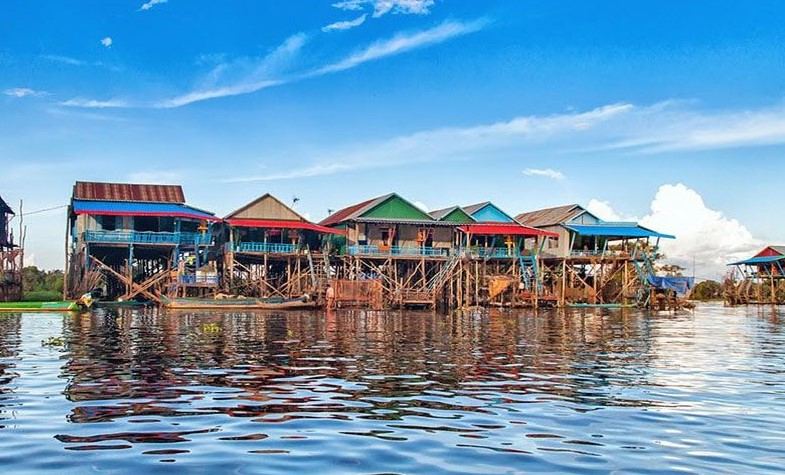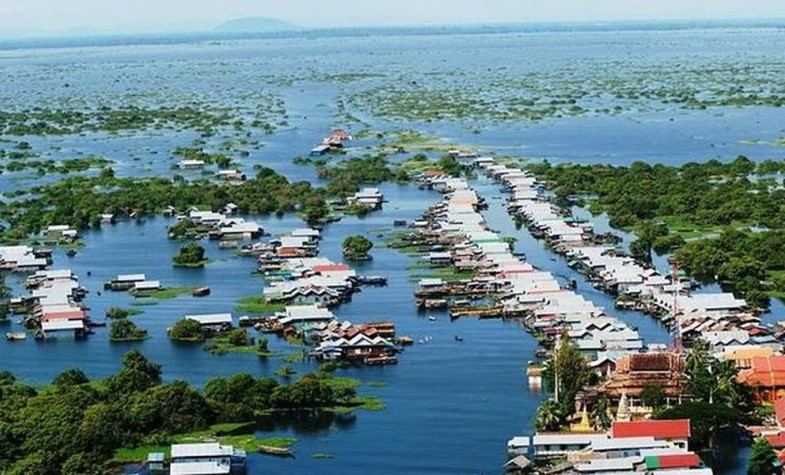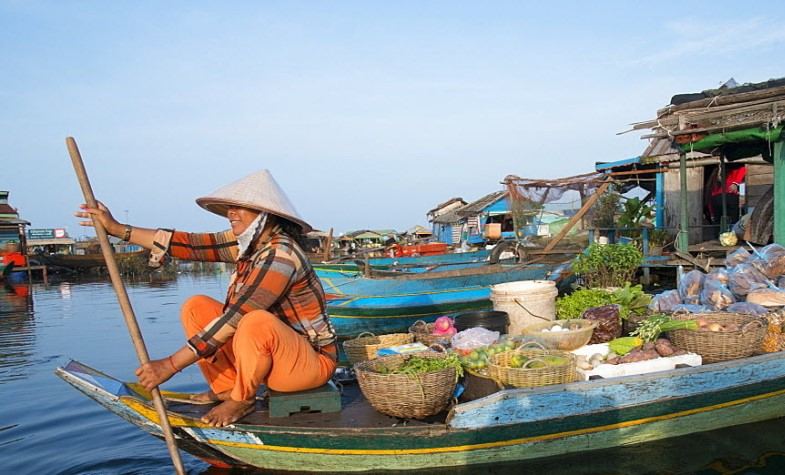


Besides its abundant and important water stream, as a World Biosphere Reserve, Tonle Sap is home to 300 species of freshwater fish of which there are giant catfishes up to 300kg, 20 species of snakes, 10 species of turtles, and some species of crocodile…
The Preak Toal Bird sanctuary is one of the main nature reserves of Tonle Sap, and also one of the most popular tourist attractions here. This sanctuary is known to be home to large colonies of grey pelicans, oriental darters, painted storks, and milky storks...

Another feature of Tonle Sap is the floating villages. The area is a gathering place for Vietnamese and numerous Cham communities, living in raft houses around the lake. People living in the greater Tonle Sap mainly rely on fishing on the lake and trading on boats.
People who live in floating villages of Tonle Sap always follow the water. When the water rises, they move their house closer to Siem Reap town, while when the water recedes, all the villages are away to a place where the water is still enough to float.

Tonle Sap is not only important to Cambodia but also to the lower Mekong River Delta (Mekong Delta). Thanks to the Tonle Sap Lake, the amount of water in the Mekong River Delta is regulated during the rainy season to help reduce flooding. Besides, the lake is also an additional source of 50% of water for the Mekong River in the dry season.
Cambodian fishermen harvest about 400,000 tons of freshwater fish every year, the majority of which comes from Tonle Sap. These fisheries dedicate 16 percent to the national GDP, making the fishing industry not only essential to the diet on a daily basis but also to the Cambodian economy as a whole.
You can take a boat trip to Tonle Sap and its floating villages from Siem Reap, Kompong Phluk, Kompong Khleang, Phnom Penh, Kampong Chhnang, Kompong Luong, and Battambang. The best time to visit Tonle Sap is during the rainy season (from May to October) when the lake becomes immense and you can easily access the rich surrounding ecosystem.
Maybe you like our Cambodia Tours and Southeast Asia Tours (include Cambodia): Highlights of Cambodia Tour | Siam Reap & Angkor Cycling tour | Best of Vietnam Cambodia tour package 2023/2024 | Must-sees of Cambodia Laos Vietnam Tour - 19 days itinerary | Spectacular Thailand Vietnam Cambodia Tour